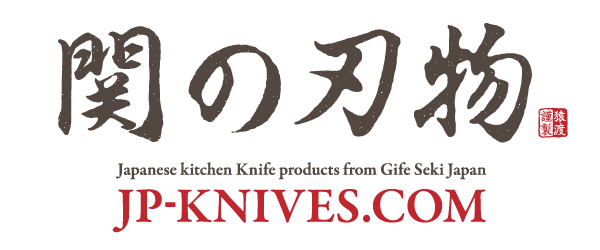
Sometimes, the variety of kitchen knives on the market can seem bewildering. Full 'knife sets' can include over a dozen pieces of cutlery, each with its own specialized use. It is not surprising that many people who start out wondering 'Should I buy a knife set?' soon ask themselves the question: 'How many kitchen knives do I really need?'
Read on to find out why we recommend starting with just two or three great quality knives - made in Japan of course!
All the Gear but No Idea
Many a novice chef has made the faux pas of arriving in the kitchen clutching a full roll of expensive knives. Many of these end up almost completely unused. How come? Put simply, there is not enough time or space in a busy kitchen to switch knives constantly. This is why experienced chefs and savvy home cooks alike rely on just a few tools to get the job done.The Most-Used Knife of All

The chef's knife (known as a 'gyuto' in Japanese) is considered the workhorse of the pro kitchen. Long and wide, it is perfect for chopping and picking up all sorts of ingredients.
If you have a particularly small workspace or prefer a knife with a straighter edge, you may wish to swap the chef's knife for a Japanese santoku - a slightly more compact all-purpose knife.
Smaller Knives for Finer Work

Not all knife-work is done on a chopping board. When performing small, detailed tasks such as peeling an apple, you need to be able to hold both the ingredient and the knife in your hands. In this situation, most chefs use a classic pairing knife. This short, sharp, stubby blade is easy to control when making very small movements, but is not ideal for work on the board.
If you do not do very much work 'in the air', owning a paring knife may seem like a waste. In this case, your next backup knife should be a utility or petty knife. These knives are still just short enough to peel with in a pinch. However, they come into their own when a sharp, manoeuvrable point is needed or an item has to be sliced quickly and accurately.
Very cheap utility knives are available everywhere, but a well-made piece in Japanese steel will last a lot longer.
Next Step: Specialize!

Your third kitchen knife will depend on the ingredients you use most often. Perhaps you fillet a lot of fish? In that case, try a deba-bocho. How about slicing raw fish - for example, when preparing sashimi? Then a long, thin knife like a yanagiba (a.k.a. sashimi-bocho) will serve you well.
If you make or buy a lot of delicious baked goods, then of course only a serrated bread knife will do!
Japanese Knives Around the World
These days, many chefs around the world are discovering the advantages of traditional Japanese knives. From the santoku to the nakiri, there is a Japanese knife to suit every style of cooking. If you specialize in a particular kind of cuisine, you will naturally gravitate towards knives with certain qualities.Putting shape and size aside, sharpness, durability and quality workmanship are universally desirable in kitchen knives. This explains why 'made in Japan' is an attractive label to many chefs - regardless of their personal cooking style!
Final Remarks
It's perfectly fine to own four or more knives if you enjoy using them on a regular basis! Well-made knives are objects of beauty and are also a joy to use. It is therefore unsurprising that some cooks become collectors of fine cutlery. If you are just starting out, however, we hope this article has helped you to narrow down the available options.With all this in mind, please enjoy browsing our full range of knives from great Seki City manufacturers.
